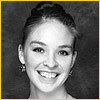Nell Shipman, choreographer and associate artistic director of the Portland Ballet, never ceases to surprise. She combines a thorough grasp of classical ballet with innovative postures, sequences and combinations reminiscent of modern dance. The result is ballet that enhances the effect of the music while telling a story so graphically that words are unnecessary.
I was fortunate enough to attend a rehearsal of “The Armed Man,” a new collaboration with the Choral Art Society to be staged with full orchestra on April 26 at Merrill Auditorium.
“The Armed Man: A Mass for Peace,” by Welsh composer Karl Jenkins, premiered at the Royal Albert Hall in London in 2000, and has since been performed more than 1,000 times around the world. It was commissioned by the Royal Armouries in the United Kingdom for millennium celebrations honoring the victims of the Kosovo War.
The work incorporates texts from a variety of religious and historical sources, including the Catholic mass, the Islamic call to prayer, Rudyard Kipling, John Dryden, Jonathan Swift and a survivor of Hiroshima.
Its musical style is entirely tonal, and often conjures up memories of film scores by John Williams. In fact, a film has been produced to accompany it. Nevertheless, the score is both exciting and moving (or was it Shipman’s choreography?).
In spite of the subtitle, there is nothing preachy about it. “The Armed Man” makes its point by depicting “things as they are,” to use a phrase by Kipling, whose “Hymn Before Battle” is one of its texts. The choreography of the final part of the seventh movement, “Charge,” reminded me of the scene in “Patton” in which the general tours the site of a tank battle, the dead posed in grotesque positions.
Shipman describes her vision of the 12-part mass in terms of a spiritual journey rather than a story.
“This piece follows a Soldier, represented by two different men as his Body and Soul, facing the realities of struggling within the task of saving lives by taking lives, having his own life taken and finally finding the strength to realize there is always light, no matter how dark the way to it may be,” she said in a written description.
“He is led through this journey by his Conscience. Life and Death, represented by two women, appear again and again throughout the piece as the personification of how the Soldier views these two opposing forces and the hold they have over him throughout his revelation from darkness to light.”
I won’t spoil the suspense by describing Shipman’s visions in detail, but to me they already work beautifully to convey concepts through motion.
The only quarrel I have with the mass itself is its use of what Wilfred Owen called “The old lie: Dulce et decorum est pro patria mori.” (“It is sweet and right to die for your country.”) One hopes that Jenkins had his countrymen in mind when he included the line (in English) in the lyrics, and that it was intended ironically. We’ll have to listen to the music, and watch Shipman’s choreography, to find out. No supertitles, please.
Tickets are $19 to $59 via porttix.com.
Christopher Hyde is a writer and musician who lives in Pownal. He can be reached at:
classbeat@netscape.net
Send questions/comments to the editors.



Success. Please wait for the page to reload. If the page does not reload within 5 seconds, please refresh the page.
Enter your email and password to access comments.
Hi, to comment on stories you must . This profile is in addition to your subscription and website login.
Already have a commenting profile? .
Invalid username/password.
Please check your email to confirm and complete your registration.
Only subscribers are eligible to post comments. Please subscribe or login first for digital access. Here’s why.
Use the form below to reset your password. When you've submitted your account email, we will send an email with a reset code.